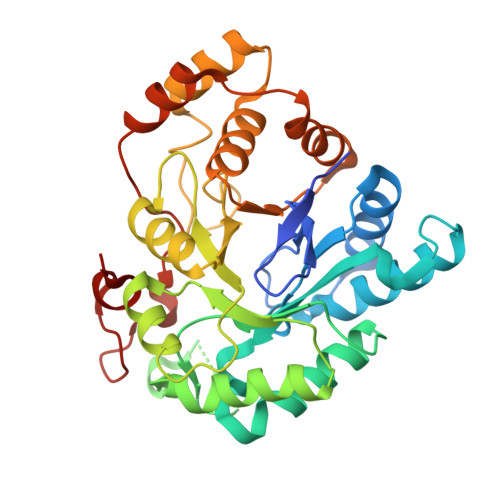Structural studies of codeinone reductase reveal novel insights into aldo-keto reductase function in benzylisoquinoline alkaloid biosynthesis.
Carr, S.C., Torres, M.A., Morris, J.S., Facchini, P.J., Ng, K.K.S.(2021) J Biological Chem 297: 101211-101211
- PubMed: 34547292
- DOI: https://doi.org/10.1016/j.jbc.2021.101211
- Primary Citation of Related Structures:
7MBF - PubMed Abstract:
Benzylisoquinoline alkaloids (BIAs) are a class of specialized metabolites with a diverse range of chemical structures and physiological effects. Codeine and morphine are two closely related BIAs with particularly useful analgesic properties. The aldo-keto reductase (AKR) codeinone reductase (COR) catalyzes the final and penultimate steps in the biosynthesis of codeine and morphine, respectively, in opium poppy (Papaver somniferum). However, the structural determinants that mediate substrate recognition and catalysis are not well defined. Here, we describe the crystal structure of apo-COR determined to a resolution of 2.4 Å by molecular replacement using chalcone reductase as a search model. Structural comparisons of COR to closely related plant AKRs and more distantly related homologues reveal a novel conformation in the β1α1 loop adjacent to the BIA-binding pocket. The proximity of this loop to several highly conserved active-site residues and the expected location of the nicotinamide ring of the NADP(H) cofactor suggest a model for BIA recognition that implies roles for several key residues. Using site-directed mutagenesis, we show that substitutions at Met-28 and His-120 of COR lead to changes in AKR activity for the major and minor substrates codeinone and neopinone, respectively. Our findings provide a framework for understanding the molecular basis of substrate recognition in COR and the closely related 1,2-dehydroreticuline reductase responsible for the second half of a stereochemical inversion that initiates the morphine biosynthesis pathway.
- Department of Biological Sciences, University of Calgary, Calgary, Alberta, Canada.
Organizational Affiliation:
















